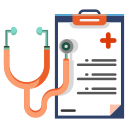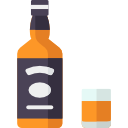Anorexia Nervosa : An overview

- Anorexia
- 14 Aug 2023
Overview
What is Anorexia Nervosa?
A severe and potentially fatal mental illness called anorexia nervosa is characterised by a distorted body image and an intense fear of gaining weight.
Those who suffer from body anorexia frequently starve themselves to death, which can have serious health repercussions including organ failure and mortality.
Although it has been understood to be a medical disease for centuries, it wasn’t acknowledged as a mental disorder until the late 1800s. Later studies, however, turned their attention to the psychological variables that affect the emergence of anorexia.
Earlier theories concentrated on the physical symptoms of illness such as weight loss and malnutrition1What is anorexia | Researched based study from nih.gov

Symptoms
What are the symptoms to rule out?
Severe physical, behavioral, and psychological signs can occur.The following list of symptoms is divided into groups for the material, behavioral, and psychological signs:
Physical symptoms
- Significant weight reduction, usually at least 15% below the average for person’s height and age
- Skinny appearance, frequently followed by a thinness obsession
- Low blood pressure and anaemia
- Excessive blood levels
- Weakening and exhaustion
- Vertigo or dizziness
- Dehydration
- Dry hair and skin
- Broken fingernail
- Constipation
- abdominal discomfort
- Menstruation irregularities or lack of period in females
Behavioural symptoms
- Severe calorie restriction, frequently combined with strict dieting or obsessive calorie tracking
- Avoiding events involving food in social settings
- Refusal to consume particular dietary group or food
- Obsession with one’s size, form, and weight
- Exercise routines that are compulsive, even when injured or physically worn out
- Refusal to eat despite being hungry or denial of hunger
- Eating practices include shredding food or arranging it in a specific pattern
- Storing or hiding foodstuff
Psychological symptoms
- People may think they are overweight or obese even though they are underweight
- Extreme anxiety about putting on weight or getting obese
- Obsessive-compulsive behaviour and perfectionism
- Worry and depression
- Mood swings
- Social exclusion
- A low sense of self
- Desperate ideas or actions.
Not everyone will show all of these symptoms, it can present itself in various ways in different individuals
However, if you or someone you know exhibits any combination of these symptoms, it may be a sign of Anorexia and needs to be treated as soon as possible by a medical expert
Diagnosis
What are the Diagnostic methods?
Diagnostic criteria
The criteria for identifying anorexia nervosa are listed in the Diagnostic and Statistical Manual of Mental Disorders, Fifth Edition (DSM-5). The following requirements must be met:
- Restricting energy consumption results in eating less food, which, when taken into account concerning age, sex, developmental trajectory, and physical health, results in noticeably low body weight
- A persistent behavior that interferes with weight loss, despite being relatively low, due to an intense fear of gaining weight or getting fat
- A disturbance in how one perceives their body weight or shape when evaluating themselves or a persistent inability to recognize the seriousness of their low body weight 2Diagnosis of anorexia | Researched based study from nih.gov
Differential diagnosis
When assessing a patient for anorexia, it is necessary to take into account a variety of differential diagnoses, such as:
- Bulimia Nervosa- It is an eating disease characterized by recurrent episodes of binge eating, which are then followed by compensatory behaviors like vomiting or laxative abuse
- Major Depressive Disorder -Anorexia and depression can result in substantial weight loss. However, in major depressive disorder, weight loss frequently coexists with other symptoms like fatigue, insomnia, and feelings of remorse or worthlessness
- Obsessive Compulsive Disorder (OCD)- Some OCD sufferers may become fixated on food or weight reduction. But in OCD, the fixation with eating and weight is frequently accompanied by other compulsions and obsessions that have nothing to do with food
- Medical Issues -Several illnesses, including cancer, hyperthyroidism, and inflammatory bowel disease, can unintentionally reduce weight. Before determining whether a patient has Anorexia, these diseases must be ruled out 7Diagnosis of anorexia | Researched based study from nih.gov
Comorbidities
Among the symptoms that are frequently observed in people with Anorexia are:
- Depression – Few people with anorexia experience depressive symptoms, making depression a frequent comorbidity of Anorexia
- Substance abuse- Frequently coexists with substance abuse, especially alcohol and stimulants
- Anxiety disorders – Generalized anxiety disorder, social anxiety disorder, and obsessive-compulsive disorder are among the anxiety disorders that are frequently observed in anorexics
- Medical problems – many medical issues, such as electrolyte imbalances and cardiac anomalies, can occur
Subtypes
What are the sub-types of AN?
- Binge/purge eating- Anorexic individuals may binge and purge eating. Body weight-wise, it differs from bulimia nervosa. In contrast to those with bulimia nervosa, who are either average weight or overweight, a person with binge-eating/purging type anorexia is typically underweight
- Restricting type-Type that restricts their food consumption, fasts, takes diet pills or uses exercise to lose weight. Some people only consume what they need to survive, while others may exercise excessively to maintain their weight or avoid gaining weight. There are no ongoing binge eating or purging incidents
Causes
What are the Causes and Risk factors?
Although the precise causes are not entirely understood, some things are believed to play a role in the onset of this condition. This piece will look at some of the possible causes and risk factors
Genetic factors
- Studies have found specific genes that may be linked with an increased risk, and they also indicate that up to 50-80% of the risk for developing Anorexia is heritable, demonstrating the vital genetic component of the disease
Biological factors
- Hormonal imbalances and abnormalities in brain chemistry are two physical factors
- Lower dopamine and serotonin concentrations are the neurotransmitters involved in controlling mood and hunger
- Environmental variables include family dysfunction, traumatic life experiences, and societal-pressures
- Low-income family relations, such as overly cautious or authoritarian parents
Cultural factors
- Societal pressure, particularly for women, to live up to unrealistic beauty standards
- Anorexia is more prevalent in Western cultures that highly value thinness
- Underlying psychological problems include poor self-esteem, perfectionism, and trouble controlling emotions
- An individual’s likelihood of getting Anorexia may increase if they possess specific characteristics, such as perfectionism and obsessive-compulsive personality
- Difficulty in good stress management or in expressing emotions
- Other factors that can cause trauma include physical or sexual assault 3causes of anorexia | Researched based study from nih.gov
Complications
What are the Complications and Consequences?
Health complications
- Malnutrition- The most prevalent and harmful health effect is malnutrition. It happens when the body does not get enough nutrients
- Cardiovascular issues- Includes hypotension, irregular pulse, and heat exhaustion
- Digestive issues- Anorexia can cause abdominal discomfort, bloating, and constipation
- Osteoporosis- It is a bone disease in which the bones become brittle and fragile, making them more susceptible to fractures. Weak bones cause it
- Endocrine disorders- When the endocrine system’s usual operations are disrupted, hormonal imbalances, irregular menstruation, and infertility can result
Social complications
- Isolation – Those who suffer from Anorexia may isolate themselves from peers and family members and steer clear of situations where food will be present
- Stigma – There is frequently a societal stigma, making it challenging to ask for assistance or support
- Relationship issues – Can cause relationship issues because the sufferer may put their eating condition before their relationships
Economic consequences
- Healthcare expenditures – Treating Anorexia can be costly, with expenses for therapy, hospitalization, and medical care
- Lost productivity – Productivity declines due to absenteeism, shortened workdays, or total incapacity
- Disability – Long-term disability brought on by Anorexia can result in a loss of revenue
- Financial burden on families – Financial burden on families who may have to assist their loved ones and pay for their medical care 4Complications of anorexia | Researched based study from nih.org
Treatment
What are the Treatment Strategies?

Medical interventions
Medical stabilization
- If they are underweight or have other health issues, treatment may be necessary. This may entail monitoring, replacement of lost electrolytes, and nutritional assistance
Medications
- The FDA has not yet approved any drugs, particularly for the treatment. However, comorbid conditions like depression or anxiety that frequently coexist with Anorexia may be treated with medication
Psychological interventions
Cognitive behavioral therapy
- This form of treatment assists patients in recognizing and altering harmful attitudes and behaviors regarding food and body image. It emphasizes on learning, coping mechanisms and getting rid of negative attitudes and behaviors
Family-based therapy
- This is a form of counselling where the entire family participates in the healing process. It includes assisting the family in supporting the person during recovery and learning to manage challenges in the interim. It is frequently used with adolescents who have Anorexia
Interpersonal therapy
- Focuses on improving social and communication skills. Addresses social isolation and relationship problems
Nutritional interventions
- Dietary guidance- Their nutritional requirements are met, and a registered dietitian creates a meal plan to assist them in achieving a healthy weight
- Meal support- This includes encouragement to consume, supervision during meals, and assistance in managing anxiety or other issues linked to mealtime
Support services
- Support groups- They offer a secure and encouraging setting to interact with people going through comparable experiences. Peers or skilled leaders can lead support groups
- Self-help tools- There are self-help publications, online forums, and mobile applications accessible. These tools offer information, inspiration, and motivation for healing
Prevention
What are the Preventive Factors?
Information and understanding
- By raising consciousness and promoting education, Anorexia can be avoided in many ways
- The risks of Anorexia, including its signs, symptoms, and consequences, must be made more widely known
Early recognition
- Prevention depends heavily on early diagnosis. Anorexia can be stopped by recognizing its warning signs, which include significant weight reduction, excessive exercise, or an obsession with body weight
Positive body image
- To promote a positive self-image, it is essential to challenge societal norms that support thinness as the ideal body type
Encouragement
- Promoting frequent exercise, a healthy diet, and self-care routines
Support
- It gave people access to resources and assistance, such as support groups, mental health professionals, and other tools to help them cope with the illness 5preventive factors | Researched based study from nih.gov
Suggestions
Suggestions for the successful management of Anorexia
- Enhancing early detection and intervention through more knowledge and education
- Creating more specialized and efficient treatments focusing on individual problems and requirements
- Researching how genetics and epigenetics play a part in the emergence and maintenance of anorexia nervosa
- Examining non-invasive brain stimulation methods, like transcranial magnetic stimulation, for their possible advantages (TMS)
- Using cutting-edge technologies to deliver more approachable and exciting interventions, like virtual reality and mobile applications 6Suggestions for management of anorexia| Researched based study from nih.gov
Takeaway
Key takeaways
- Although it can impact anyone, regardless of age, gender, or race, anorexia nervosa is most frequently found in teenage girls and young women
- Although the precise cause is not entirely known, it is hypothesized that a combination of genetic, environmental, and psychological factors may have an impact
- Treatment is a multi-disciplinary approach with a combination of therapy, nutritional counselling, and medication
- It can have severe physical and psychological effects, including malnutrition, organ failure, bone loss, and depression
- Recovery from anorexia nervosa is possible. The process can be challenging and lengthy, calling for ongoing help and care
Any feedback on this article?
 This Articles content was accurate
This Articles content was accurate Very Informative Article
Very Informative Article I have a question or a comment
I have a question or a comment
 This article contains inaccurate content
This article contains inaccurate content This article was not helpful
This article was not helpful I have a question or a comment
I have a question or a comment
We appreciate your helpful feedback!
Checkout our social pages
References
-
National Institutes of Health
Fact sheet | Anorexia
-
National Institutes of Health
The diagnosis and treatment of eating disorders | Diagnosis
-
National Institute of Mental Health
Eating Disorders | Causes
-
National Institutes of Health
Anorexia nervosa | Medical complications.
-
National Institutes of Health
Anorexia nervosa: The physiological consequences of starvation and the need for primary prevention efforts | Prevention
-
National Institutes of Health
Anorexia nervosa: current status and future directions | Suggestions
-
National Institutes of Health
Differential diagnosis and pathogenesis of anorexia nervosa | Diagnosis



































